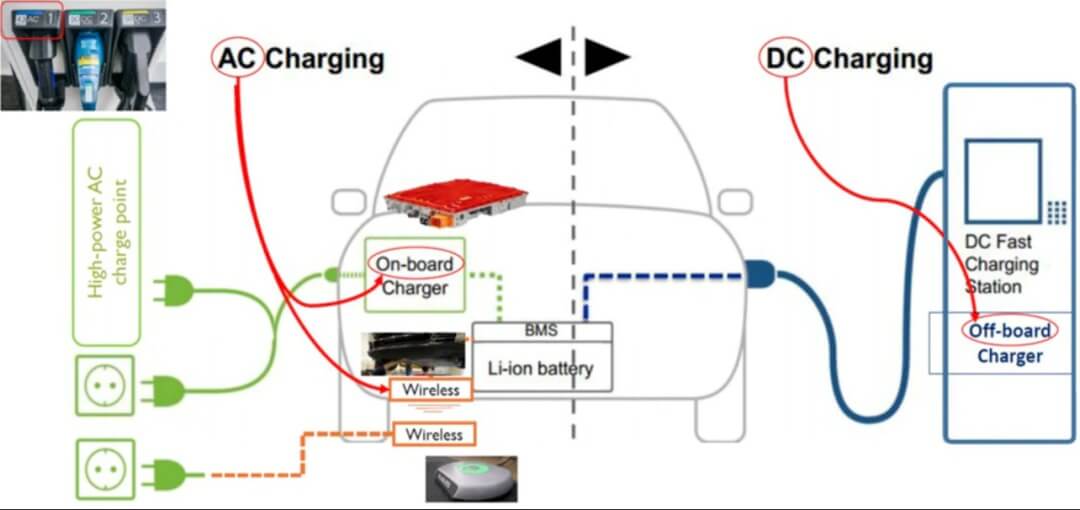With the rapid development of electric vehicles (EV), charging technology has become a focus of our’s attention. Among them, AC EV Chargers and DC Fast Chargers are the two most common and familiar types. What is the difference between the two and how to choose? This article will deeply analyze the core differences between the two to help us make the right choice.

Charging Principles:
AC chargers (AC charging): The alternating current (AC) provided by the power grid is transmitted to the vehicle through the charging pile, and then converted to direct current (DC) by the on-board charger (OBC) and stored in the battery.
Power range: Usually 7-22 kW, suitable for slow charging at home and in public places.
Charging time: Fully charged takes 4-12 hours, depending on the battery capacity and charging power.
DC Fast Chargers (DC fast charging): The charging pile has a built-in converter that directly converts AC to DC, bypassing the on-board charger and directly supplies power to the battery.
Power range: 50 kW to 350 kW (some supercharging can reach 1.5 MW), and can be charged to 80% in 30 minutes.
Charging time: 200 kilometers of range in as fast as 10 minutes (such as BYD megawatt supercharging)
Use Cases:
| Scenario | AC Charger | DC Fast Chargers |
|---|---|---|
| Home/Office | Ideal for overnight charging | Impractical (high grid demand) |
| Long-Distance Travel | Limited range replenishment | Highway rest stops, rapid charging |
| Public Parking | Widely available for daily use | Concentrated in hubs, malls |
Technical Compatibility:
- Connector Types:
- AC: Type 1 (US), Type 2 (EU), GB/T (China).
- DC: CCS (EU/US), CHAdeMO (Japan), or Tesla Supercharger.
- Vehicle Limits: Most plug-in hybrids (PHEVs) lack DC fast-charging support.
Pros and Cons Analysis:
AC Charger: Strengths and Limitations
- Pros:
- Affordable, ideal for residential use.
- Gentler on battery longevity.
- Cons:
- Slow charging, unsuitable for emergencies.
DC Fast Chargers: Strengths and Limitations
- Pros:
- Ultra-fast charging for long trips.
- Future-proof with high-power support (e.g., 350+ kW).
- Cons:
- Frequent use may accelerate battery degradation (~0.1% added wear).
- Higher public charging costs and infrastructure dependency.
How to Choose?
1. Which is better for daily commutes?
Choose AC charging for cost efficiency and battery health.
2. Does DC fast charging harm batteries?
Modern EVs manage heat effectively—occasional use has negligible impact.
3. Will AC chargers become obsolete?
No. AC remains essential for daily needs, while DC evolves toward megawatt speeds (e.g., Huawei’s 1.5 MW chargers).



